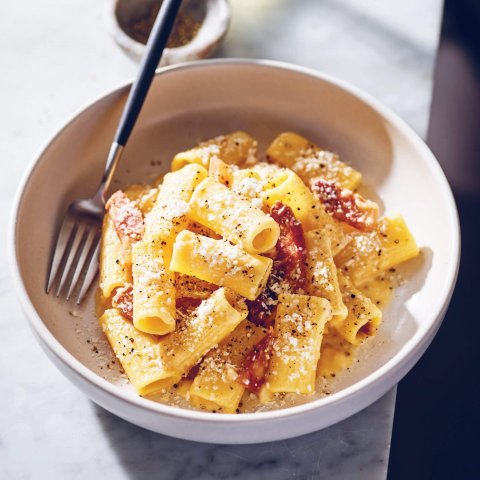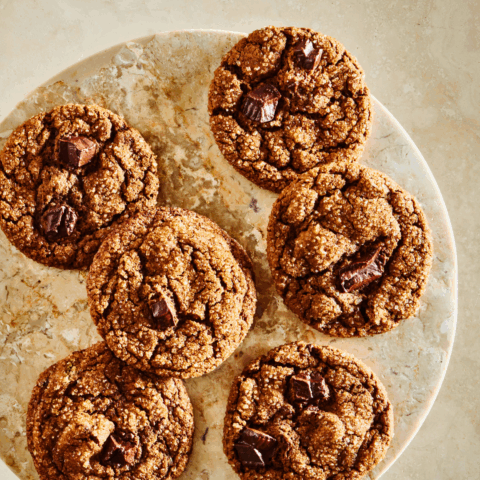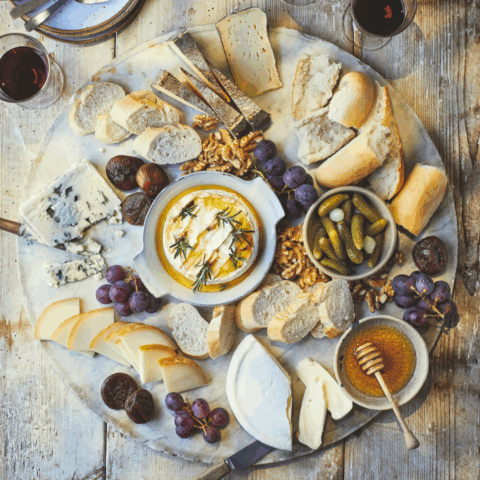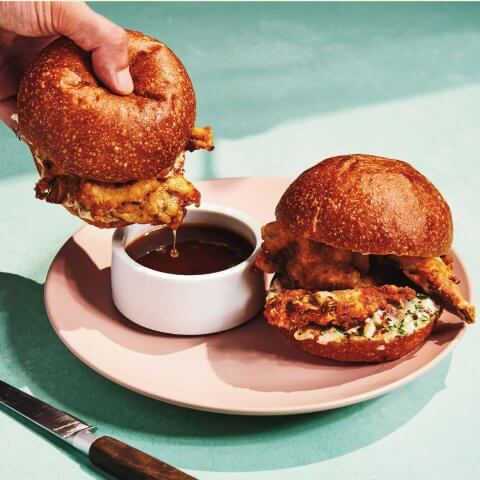“There isn’t a more debated dish in Rome than carbonara. It is to Rome what pizza is to Naples, that is, iconic – and, traditionalists will say, untouchable. Nowadays you can find many chefs in Rome experimenting with ingredients and often adding a seasonal twist like asparagus or artichokes, but for me, nothing beats the classic. Everyone has an opinion on the matter; ask any Roman about where to eat a good carbonara and they will tell you only their choice is the best in town.
A few things to note about real-deal Roman carbonara: under no circumstance does it contain cream. Don’t let even the creamiest one you try in the Eternal City mislead you. It’s made with crispy guanciale (cured pork cheek), Pecorino Romano and eggs. Roman carbonara is unlike any you’ll taste elsewhere but recreating it at home is easy – with a lot of practice. The difference between a smooth one, and scrambled egg on pasta, is merely a matter of seconds. In fact, a chef once told me, ‘Carbonara is a lot like life. If you’re not watching closely, you’ll screw it up!’
This recipe is from my favourite trattoria in Trastevere, Da Enzo al 29. Their version rarely disappoints, becauseount of saltiness and is decadently silky.” –Food and travel writer, Maria Pasquale
Pasquale’s foolproof method to ensure a smooth carbonara “sauce”:
Add the pasta and guanciale into the bowl with the eggs and stir well. The heat from the pasta will cook the egg and the sauce will remain silky smooth.
Carbonara trivia:
In Italy, carbonara is usually prepared with ‘pasta gialla’ eggs, a special type of local egg with an intense yellow yolk, which gives the dish a distinctive yellow colour. Regular eggs will create a paler carbonara, but the flavour will still be the same.

Authentic Carbonara
Ingredients
- 700 g (9 oz) rigatoni
- 350 g (12½ oz) guanciale (cured pork cheek)
- 4 whole eggs
- 2 egg yolks
- 300 g (10½ oz) Pecorino Romano, grated plus extra to serve
Instructions
- Bring a large saucepan of salted water to the boil. Add the pasta and cook for the time indicated on the packet.
- Meanwhile, remove any rind from the guanciale and cut the meat into chunky strips about 1 cm (1⁄2 in) thick.
- Place a large frying pan over high heat, add the guanciale and fry for 4–5 minutes, or until the fat melts and the meat becomes crunchy.
- Meanwhile, beat the eggs and egg yolks well until smooth, then mix in the pecorino and season with a generous grind of black pepper.
- Once the pasta is al dente, drain and add to the pan with the guanciale, stirring well to coat the pasta in the guanciale fat.
- Turn off the heat. If you are feeling confident, add the egg mixture to the pan, tossing the ingredients together rapidly to avoid the egg scrambling. Alternatively, the foolproof method is to add the pasta and guanciale into the bowl with the eggs and stir well. The heat from the pasta will cook the egg and the sauce will remain silky smooth.
- Serve with a sprinkling of pecorino and a good grind of black pepper.
Notes



















